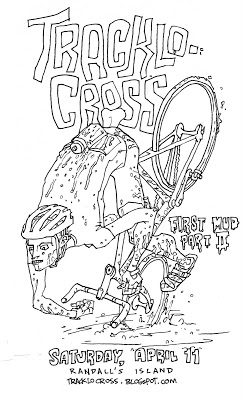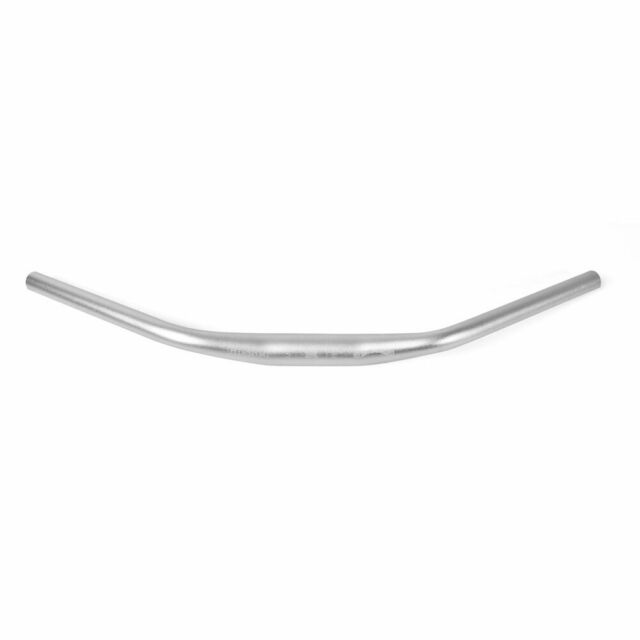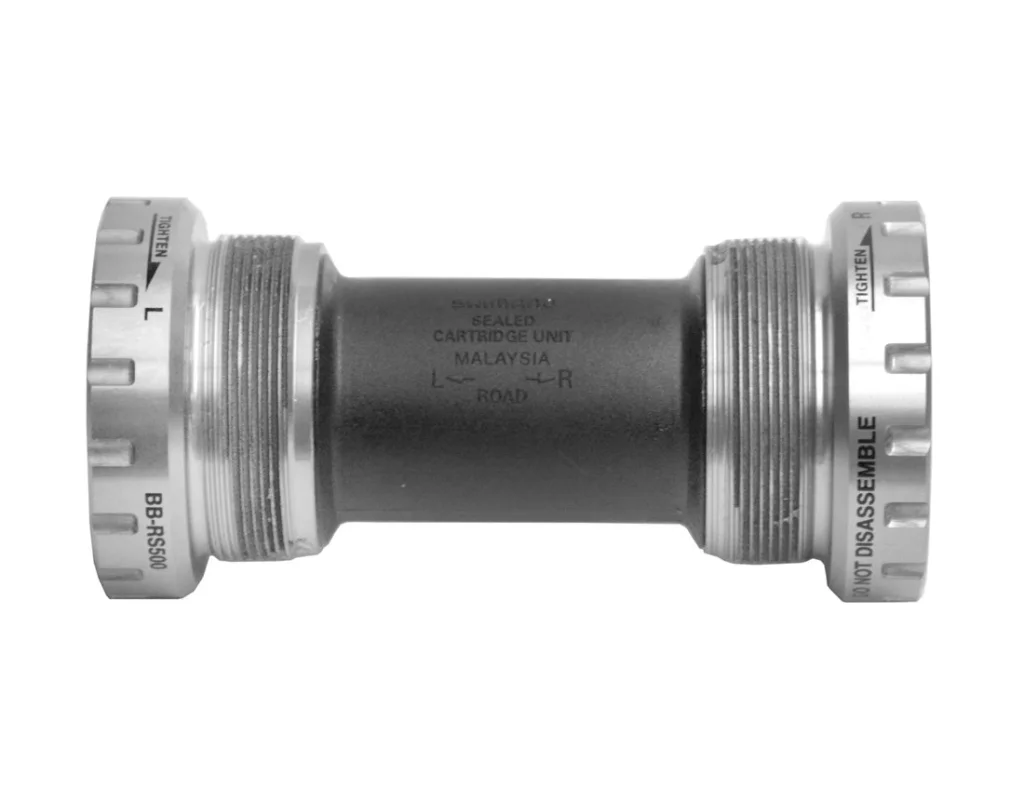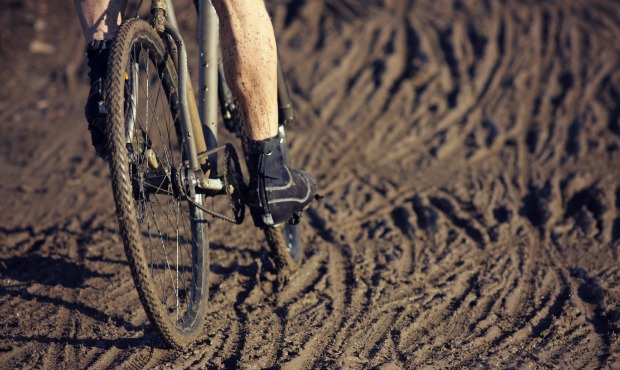Simply put, tracklocross is where you take a track bike and fit the widest tires you can in. You then ride your new beast on wildly inappropriate terrain and end up with the biggest smile on your face possible. Think of it as cyclocross on a bike that is totally wrong for it, and realise that this makes it the best bike for the job.
In a check-me-out moment, I’d just like to say I have a little store that has clothing and little bike parts going in and out of stock. Give it a look if you’d like.
Skidding across the countryside
Tracklocross has slowly been brewing around the world, to become a movement within cycling that is purely about fun. Skidding through the woods allowing us to all rediscover our childhood. I’m also going to go out on a limb and say getting to dirt trails is more practical on a fixed gear than on my jump bike or BMX.
Tracklocross is a niche within a niche and even using the internet it is pretty hard to find much history about folks playing about on fixed gear bikes offroad. One of the pages that Google wants us to look at is when CX Mag covered the 2019 US Tracklocross National Champs. Nicely though they also summed it up with 2 videos.
First tracklocross world champs
Between August 29th and September 1st 2019 in Japan, at Mt Fuji’s base, the first tracklocross world champs happened. The race here is 11 years after the first race flyer I can find on the internet. I’ll update and evolve this article as I find more articles and history to post.

The next year’s flyer was way better.

The winners in Japan were Michelle Wilcox in the women’s category, and Kazzle Spencer in the men’s category.
I decided to start exploring the history of tracklocross on a new page.
What is tracklocross and how do I build a tracklocross bike?
As we’ve said, tracklocross is a track-style frame, fixed gear, and big chunky tyres shoved in. After that, you are pretty free to build your tracklocross how you want. Wide bars, swept-back bars, no brakes, two brakes, and one brake are all up to you.

Gear Inches
A few things will help you build up a tracklocross, and one of those is understanding gear inches. All fixed geared bikes will have one gear, and you’ll want to have a rough idea of what gear you need when you’re building a bike up, you don’t want a spiny bike if you’re a masher and vice versa.
One of the things that confuses most people is the difference between a gear ratio and a gear inch. A gear ratio is your front chain ring divided by your rear cog. You’ll want this number to be somewhere between 2.2 and 2.6. If you’re going to spin, go to the lower end. If you hate your knees and mash gears, you can get away with up to a 3.0 ratio. You don’t want to do that if you live anywhere with proper hills.
The ratio is a quick and easy way to compare gearing between bikes with the same size wheels. If you want to know how your gearing compares to other wheel sizes, then you’ll want to know your gear ratio. Your gear ratio tells you how many inches forward your bike will move for one full revolution of your cranks. It is important to remember that this number is an estimate and not absolute.
To get your gear inch measurement, you take the gear ratio and multiply by your wheel size in inches. For a 700c wheel, you’ll find this is 28 inches, not the 29 inches that the bike industry currently tells you it is. We’ll explain the joys of wheel and tire sizes in a future article.
If you’re brand new to tracklocross, we’d recommend starting with a 40/17 gearing. That will give you a gear ratio of 2.35, and 63.53 gear inches. If you find it too heavy, then move the front ring size down. If you find it too light, then go a front ring size up.
Why did we pick 17 for a rear cog?
We picked 17 as a rear cog size as it makes working out how many skid patches you’ll have. Skid patches you ask? Skid patches are the part of your tyre that is in contact with the ground when you’re skidding. When riding a fixed gear, especially if you have no brakes or just a front brake, you’ll use skidding to slow down. The higher number of patches you have the longer your tires should last.
It’s easiest to stop with your front foot on your pedal at the 3 ‘o’clock position. If you only have one skid patch for your chosen chainring/cog combination, you’ll find you wear your tyre out fast. If you want to know how to work out how many skid patches you have, take your front ring and cog size and make them a fraction. Then take the fraction down to it’s simplest form. The denominator will then be the number of skid patches you have.
A 17 rear cog will always give you 17 positions. Going up and down a front ring size will not effect this. The only chainrings that will change this rule are a 34 tooth or a 51 tooth ring. They each give you a solitary skid patch and as such you should not use them.
To make it easy see below for a skid patch chart and a gear ratio/inches charts.
Gear ratios

Gear inches

Skid patches

If you want to know other gear ratios and what speed you can be capable of with your gearing then check Bike Calc.
3/32″ or 1/8″?
One of the most common stumbling blocks for people coming into single speed cycling is the difference between 3/32″ and 1/8″? A 1/8″ chain is the most common chain found on single speeds, and 3/32″ chain is the most common chain found on derailleur equipped bikes. A 1/8″ chain will fit on parts that are either width. 3/32″ chains will only fit on parts designed to work with 3/32″ chains.
If you want to know more, I’ve written a little blog post about 3/32″ and 1/8″.
Steel or aluminium frame

The steel or aluminium debate has been going for years, its also worth noting that many people call aluminium, alloy, but steel is also an alloy. You can be a real pedant with that information. You’ll hear lots about steel being comfortable and aluminium being harsher, but the truth is 90% of your ride feel will come from your tyres. I remember being on a tech course fronted by Cervelo and they actually went with tyres being responsible for 98% of ride feel.
If you want to know more about steel or aluminium, go and visit any bike forum and post about steel being real. You’ll get some information and a lot of personal opinions disguised as fact. Always remember, though, go with your tyres for feel.
Steel frames generally tend to come with a little more tyre clearance in my experience, which is no guarantee though. Tyre clearance will be something you’ll definitely want to be looking at, especially if you live somewhere where it gets muddy. Don’t just worry about your tyres clearing your frame and forks, make sure that too much mud can’t get built up between the tyre and the rest of your bike.
Personally, I like steel as I prefer the way a bike looks with narrow steel tubes. If you prefer the look of aluminium frames, go for one of them. If you think your bike looks great, you’ll ride it more and have more fun. Buying a bike based on value or function can sometimes be a bad idea, especially if you aren’t too into the looks. Buy what sings to your heart.
I haven’t gone into weight here, as honestly its a straightforward metric that magazines used to make their reviews seem objective. I’ve ridden super-light bikes and super heavy bikes, and quite often the super heavy ones were way more fun to ride than super-light bikes.
If you want help picking a frame, then we’ve started a guide to frames with wide tyre clearance.
Bars

Handlebars are a vital part of your tracklocross build. You can even make a case for them being more important than your frame. The reason they are more important is that they are a contact point. You have three contact points on your bike, your handlebars, your saddle, and your pedals. The longer you are out on your bike, the more these points matter, this is especially true if you are riding a longer gravel route than a more technical offroad route.
The reasons for this are if you’re riding a longer gravel route, your upper body should be stationary. If you are riding offroad and it is technical, you will be moving about your bike a lot. With your upper body staying stationary, you will be putting a lot of your body weight through your arms and down onto your wrists and hands. Staying put can lead to fatigue and numbness. That is why you need to get bars that work for you.
Let us then look at some bars.
The wide and flat bar

The wide and flat bar is pretty common now on a tracklocross bike, and there are a few reasons for that. Before we look at them, it is important to note that you’ll want to be running a shorter stem if you are going to run a wide and flat bar. Wide bars and a long stem will put a considerable amount of strain on your arms.
The main reason for riding a wider bar is that it brings you more leverage. Steering then requires less force, but you do need to turn a bit more. This makes it easier for you to control your bike when the trail is trying to force your wheel to go in a different direction. You’ll be feeling in more control over rough ground.
The people this benefits are those that will be going for as much speed as possible through offroad sections. If you ride more sedately, you may find that riding a wider bar gets tiring, with the bigger steering movements you have to make.
A wider bar can also help when going uphill. It will bring more leverage when you’re pulling your bike up a slope. There is also the fact that with your hands wider apart, you will have opened your chest up, making it easier to breathe.
Drop bar

For the majority of people riding tracklocross, drop bars will be a bit too sketchy. They are pretty narrow, and you’ll have no hoods to hold onto. Make it easy on yourself and don’t bother. The answer may change as I try it the new generation of super flared and wide gravel bars.
Swept back bars

Wide and flat bars are the choice for the fast folks. Swept back bars are the choice for those of us going out to just pedal around and see the world or if we’re going for longer trips, such as fixed gear bikepacking. One thing to realise about swept back, or comfort, bars is that they make a little bit to get used to having on your bike. Don’t just give them a 5-mile blast and think they are not for you.
Ideally, you’ll want to pick a bar with a 15° or more back sweep—bars with this larger sweep help keep your ulnar nerve at a natural angle. When riding for a while, this is the nerve that tends to go numb when you’re riding, and you can do long term damage to your nerve by not having a suitable bike fitting.
Wheels
You’ll be wanting a nice set of track wheels if you’re going to ride tracklocross. Your front hub will come with a fairly standard 100 mm spacing. Your rear wheel will generally come with 120 mm spacing. This is narrower than geared bikes. The good news is you can buy a set of track wheels for not a huge outlay.
If you want to run brakes, make sure you pick up a set of wheels with a brake track. Many track wheels are designed for bikes that run no brakes, given that you don’t have brakes when racing track events. You may also find that your frame can clear 35 mm wide tires, but a track rim might not be suitable for 35 mm tyres.
To help you pick tyres, look below for a simple table showing what tyre sizes fit inner rim widths.
| Internal rim width (mm) | 17-19 | 20-21 | 22-23 | 24-25 |
|---|---|---|---|---|
| Tire size 23-25C | √ | |||
| Tire size 25-28C | √ | √ | √ | |
| Tire size 28-30C | √ | √ | √ | √ |
| Tire size 30-33C | √ | √ | √ | √ |
| Tire size 33-35C | √ | √ | √ | √ |
| Tire size 35-38C | √ | √ | √ | √ |
| Tire size 38-40C | √ | √ | √ | |
| Tire size 40-43C | √ | √ | √ | |
| Tire size 43-45C | √ | √ | ||
| Tire size 45-48C | √ | √ |
There are also now some tracklocross frames appearing with 135 mm back ends, such as the Squid So-Ez. 135 mm is a mountain bike standard and is used with disc brake frames, well it was now mostly only used on entry-level mountain bikes. There are brands, such as Surly, who make fixed gear hubs in this size. You can also cheat and use a 135 mm disc hub and use an ISO cog to bolt onto the hub instead of a brake rotor.
Bottom bracket and cranks
Traditionally on a track or fixed gear frame, I’d go with square taper cranks. I guess this decision comes from aesthetics. Square taper cranks look amazing a skinny steel tubed frame. If you want to fit square taper cranks, you’ll need a square taper bottom bracket. A few people get confused here as square taper bottom brackets come in a few sizes.

On a track frame, you will have a 68 mm shell width. 68 is that standard road bike width. You can also get a few bottom brackets designed for a 73 mm shell, this is a mountain bike standard, and you could technically fit one to your track bike using spacers, but you honestly don’t want to go down that hassle.

You will then see that they come with different axle lengths. These axle lengths are designed to cover single, double, or triple chainsets. You’ll find that track chainsets will work with sizes of between 103 and 112 mm. The cranks you buy will have a recommended width, so make sure you check what the manufacturer advises.

If you want to run a more modern crankset, there are now many single front ring road and gravel cranksets. You’ll be wanting to run cranks that can be run through a BSA bottom bracket. Pretty much all track frames with come with a 68 mm BSA shell. BSA will also be called threaded, or if you come from BMX, Euro.

Crank length
Regardless of the style of cranks, you opt for; you’ll want to go with a shorter crank length, ideally 160 or 165 mm. The shorter crank length makes it a bit easier to turn your cranks, pretty good if you have the odd high cadence section to deal with. The shorter length will also help lower the risk of pedal strike when pedalling through corners or berms, because riding fixed means you will not be able to coast round corners or through rock gardens.
Tyres

There is a vast amount of cyclocross tyres available, and you should be able to find tyres that suit your local location. Spending money will bring you lighter and more supple tyres, but you will more than likely were through the rear one pretty fast with skidding. In this case, spending more might just be a fool’s errand.
We said earlier that tyres will provide around 90% of your ride feel, and that is why many people go for light and supple tyres, they make your bike feel like it is riding on air. These tyres though tend not to hold up too well for tracklocross. I prefer a cheaper tyre as they tend to have thicker sidewalls and that helps with skids, they also help to offer protection from rocks you may not have noticed as you’re riding along.
I also go with tubes rather than tubeless tyres. Tubeless is excellent for running lower pressure, and it allows the tyre to deform to match the terrain. I’ve found lower pressures tend to let the tyre burp when you want to get wild with skids. A burp is where lateral forces change your tyre’s shape and cause it to pop off the bead, it will then pop back in, but you’ll have lost a lot of the air in your tyre.
Pick your tyre
You’ll not only want to buy tyre’s you can afford to replace regularly, but you might also want to think about tread patterns and how to match them where you ride. I will generally ride different tyres in summer than what I do in winter, but sometimes the weather is so wet in Scotland, I’ll just keep the winter tyres on for the whole year.

In super dry conditions, I’ve heard rumours that these places exist, then you’ll want to look towards a file tread pattern. You can also use this tread in snow and ice. These should provide more grip than you imagine. If you find yourself sliding a bit with them, then it is good practice to drop some PSI.

We then have what are called intermediate, or mixed, pattern tyres. These tyres will work well in most conditions. If you don’t want to buy lots of tyres and stick to just one, getting an intermediate tread is for you.

Finally, we have wet tyres. Wet tyres are as the title suggest great for when the weather is terrible, and are pretty much the opposite of the file tread tyres. They will look a little similar to intermediate tyres, but the knobs will be bigger, and you’ll find larger spaces between the knobs to help with mud clearance.
Pedals

As you’ll be riding a fixed gear, you’ll be wanting some form of foot retention especially if you’d like to slow down at some point. You have a choice here, and you can go for pedals and straps, or you can go for clipless pedals.

There are plus points and minuses to whichever system you choose. Pick the one you feel you may be the safest in or prefer the look of and go from there, don’t worry too much about what is fashionable. Whichever style you pick, make sure you practice getting in and out of your pedals safely somewhere safe. There is no point in coming down a trail and needing to get a foot down to save yourself and then realising that you don’t know how to do it. Practice will make it easier.
Don’t go for a road clipless setup though unless you want to slide about in the woods if you get off your bike. If something breaks on your bike and you have to walk it home, you don’t want to be doing that wearing road shoes. You should also make sure your bike is working before heading out.
Saddles

Saddles are an entirely subjective and none objective choice. Don’t take anyone’s recommendation as to the one true answer. We all weigh different amounts, ride in different styles, and have slightly different body shapes. Out of the parts on a bike, this is the one that you really have to sort out on your own.
There are though a few helpful pointers we can give you. If you are not very flexible, then look for a saddle with a more rounded shape. If you are pretty flexible, then look for a flatter saddle. An extra padded saddle is not always more comfortable than a saddle with no padding. Being more expensive does not mean that a saddle is better for you.
So, there we have it a quick guide to tracklocross and how to pick bits for your bike. If you would like me to go into more detail on any of the bits then please comment below and also do so if you want to add bits.

68 thoughts on “What is Tracklocross?”